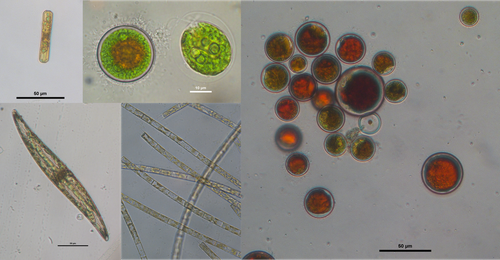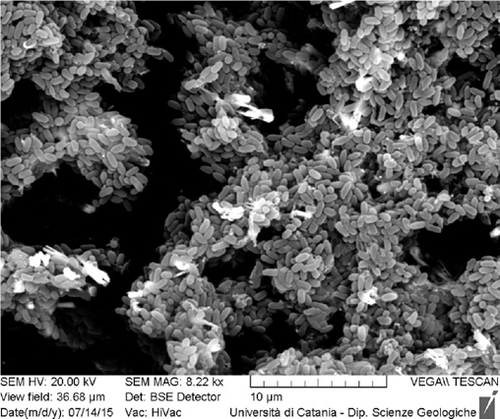Mauro Magnani - Milva Pepi - Laura Pezzolesi - Rossella Pistocchi - Francesco Regoli - Mara Simonazzi
The enormous biodiversity of marine organisms together with the increasing availability of genomics, proteomics, metabolomics, lipidomics, etc.data, represent an invaluable source of information to identify new molecules and to develop new therapeutic treatments. Up to now most of the efforts were directed to identify new chemical entities from marine organisms using the identified compound as drugs or starting lead compounds for further developments. Many targets considered were relevant in tumor treatment, inflammatory conditions or metabolic diseases. Our proposal, instead, will take advantage from the genome information of different marine organisms to develop new biologics and new therapeutics.
As an example we mention a green algae (Anabaena variabilis) that contain a gene (Phenylalanine Ammonia Lyase) coding for an enzyme capable of Phe (the amino acid toxic in human carrying the condition known as Phenylketonurea) degradation. This gene is not present in the human genome. Starting from the sequence of this gene the corresponding recombinant protein was produced in bacteria and administered to a murine model of Phenylketonurea.

The protein was administered within autologous red blood cells to prevent any immunological reaction against the foreign enzyme, demonstrating the ability of this therapeutic to normalize the metabolic defect and to restore the clinical condition in this animal model. This approach will be explored in other conditions with specific medical needs.

Secondary metabolites obtained from terrestrial plant organisms have long been used as an important resource of drugs for the treatment of various pathologies or infections. More recently, the marine environment has gained increasing interest given the huge variety of animal and plant organisms that live there. In fact, millions of animal and plant species, other than terrestrial ones, live in the oceans and therefore represent a rich and not yet exploited source of biologically active compounds, but also of new biochemical pathways still unknown. For example, a large number of bioactive molecules isolated from marine sources are promising candidates for extensive preclinical assessments in the treatment of various pathological degenerations and some of them are used in clinical studies for the treatment of cancer.
Most of the natural marine molecules are produced by invertebrates such as sponges, corals, ascidians and bryozoans, or by algae and belong to different structural classes such as polyethers, terpenes, alkaloids, macrolides, polypeptides. During their growth these organisms very often are able to produce a rich package of molecules deriving from their "secondary metabolism", which they can use as chemical strategies during their life cycle, or as a response to environmental stress. The organisms in fact develop a series of adaptations and behaviours aimed at safeguarding the species, such as defence against predation or proliferation of competitive species, sometimes assisted by the extreme conditions of the habitat, such as low or high light, high pressure, variable temperatures, or little availability of food. The ability to adapt to the environment is important for organisms also in view of future climate changes.
Unlike terrestrial resources which are considered to be explored from a pharmaceutical and biochemical point of view, less than 1% of existing marine species have been examined for their pharmacological potential; they are therefore of interest to scientists from different disciplines such as biologists and ecologists, but also organic chemists, biochemists, or pharmacologists.
Marine microorganisms, with their ability to adapt to a multitude of different and sometimes extreme conditions, have developed numerous metabolic pathways, including those for some active secondary metabolites not present in terrestrial ecosystems. Some secondary metabolites include alkaloids, steroids, terpenoids, peptides and polyketides. Strains of some microorganisms both prokaryotes and eukaryotes isolated from the marine environment, can be used in biotechnological, pharmaceutical and therapeutic contexts for the production of molecules with antimicrobial, antioxidant, anti-angiogenesis, antidiabetic and other relevant biological properties.
It is therefore of enormous interest to identify new drugs and nutrients originating from microorganisms of marine origin, to be taken into consideration also in nutraceutical contexts, for the improvement of human well-being and in accordance with the principles of sustainability. Studies on microorganisms of marine origin will be carried out to identify new generation antimicrobials, nutrients of marine origin, such as chitosans and carrageenans derived from polysaccharides of marine organisms. The study of exocellular materials present in the biofilms of marine microorganisms (polysaccharides, lipids, glycoproteins and lipopolysaccharides), to be used as stabilizers, gelling agents, adhesives, thickening agents, emulsifiers, flocculants and cleaning agents, is also of great interest.
The identification of new active ingredients in various contexts, pharmacological, food, cosmetic, etc. obtained and/or derived from marine microorganisms, will allow to open new lines of research and to exploit widely available biological materials.

Biofilm di batteri di origine marina, con produzione di esopolisaccaridi (da Pepi et al., 2016 Science of the Total Environment 562: 588–595)